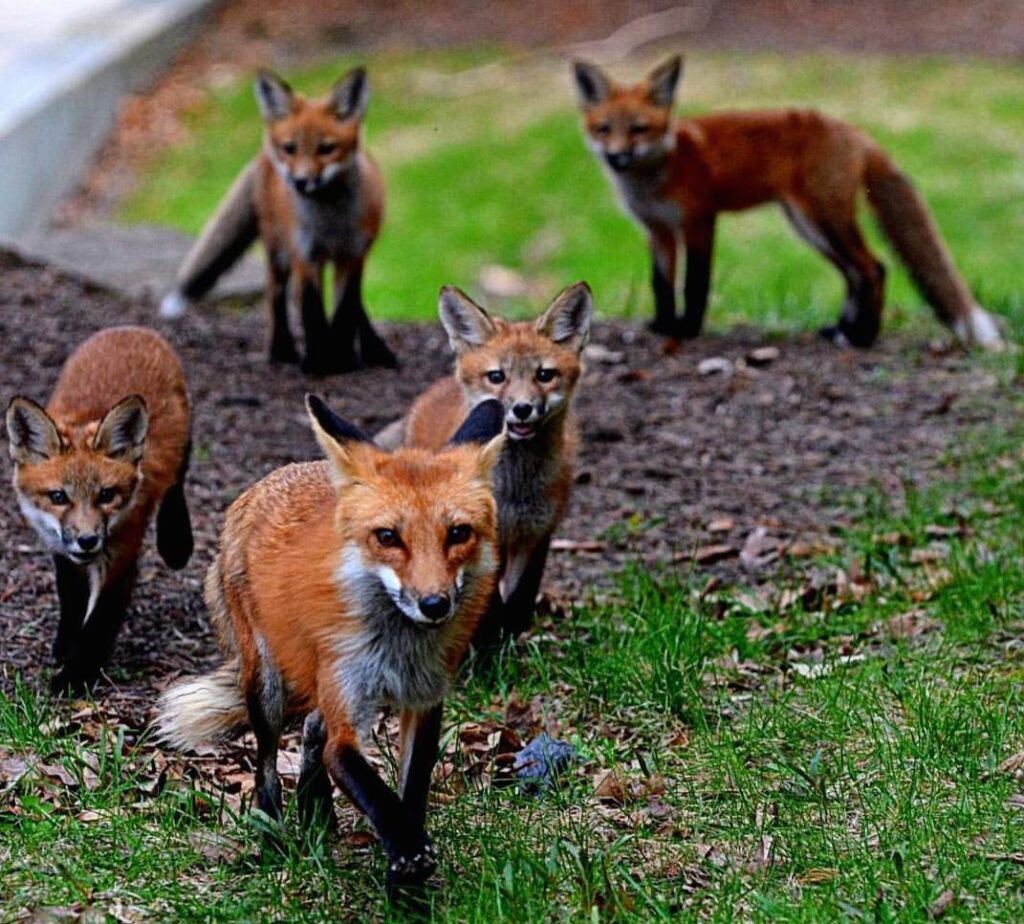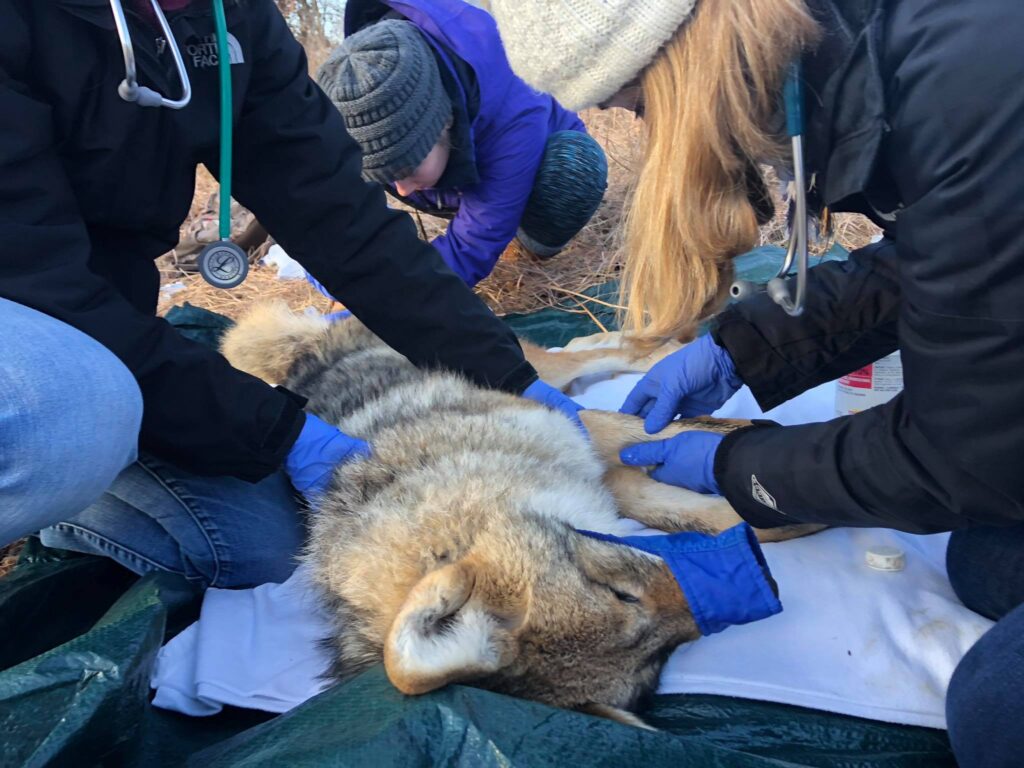Foxes and coyotes belong on the landscape, even the urban one. The UW Urban Canid Project promotes awareness and research about these animals.

I had quite a shock last August when I looked up from my seat on Madison’s Lakeshore lawn and saw the small, scrawny body of a fox casually trotting past me. In open daylight, she seemed unbothered walking a few yards away from me and some smiling passersby. The sighting was so casual, like the fox was headed into the city to get her weekly groceries.
It turns out that these animals are city dwellers, just like us.
In 2013, Madison began seeing an increased number of coyotes and foxes in the city and the nearby Lakeshore Nature Preserve The Preserve reached out to David Drake, a UW professor and Extension Wildlife Specialist. Drake saw the opportunity to investigate these species and help the public manage their emerging relationship with the urban animals.
Drake would soon develop the UW Urban Canid Project, an affiliate program of UW–Extension’s Natural Resources Institute, with the overarching goal of promoting positive coexistence between humans and urban foxes and coyotes (collectively known as canids). Through integrated research and outreach, the program focuses on understanding the ecology of urban canids, while also promoting education about these often-misunderstood animals.
Coyotes have a mixed reputation among humans and have often been perceived as dangers to us and our pets. Red foxes are viewed more positively, partly because of their smaller size.
Regardless of the species, people have questions about why coyotes and red foxes are in urban areas and what their lifestyles are. Drake’s project uses research to answer these questions and share them with the public to help us develop more positive relationships with our furry neighbors.
Since 2014, the UW Urban Canid project has investigated how canids use the urban landscape, including where they spend time and when they are active, which is mostly at night. Coyotes primarily inhabit urban greenspaces, while red foxes enjoy the built environment.
They also research how coyotes and foxes interact with each other and with humans. The two canids co-exist peacefully in urban environments, which is different from wild environments. Both coyotes and red foxes have overwhelmingly positive interactions with humans, explains Drake.

Drake and his team have also examined disease ecology in urban coyotes and red foxes, and management tools like red fox relocation.
The main mortality cause for urban canids is being hit by vehicles, so Drake and his graduate student study road crossing by these animals to understand how living in a more road-dense environment affected the animals’ behavior, and mortality. Specifically, the researchers are interested in seeing if animals living in road dense areas are more vulnerable to getting hit by a vehicle, or if they become more experienced and cross roads safely.
“A lot of people, when they think of animals in the city, a common response is ‘Well, the city is expanding and moving out to where these animals are and they don’t have any space,’” Drake says.
While that is true for some species, coyotes and red foxes are actually coming into the city.
City living is quite easy for these animals, Drake explains, because they have an abundance of food, refuge from trapping and hunting, and relatively little fear of predation.
There are even some benefits to having canid neighbors. As part of the food chain, they have the potential to regulate prey populations like rabbits and mice. In Drake’s opinion, seeing wildlife also brightens people’s days and enriches their lives.
“These animals are here on the urban landscape, and they are not going to leave… Humans aren’t going to leave either. So how do we figure out how to live in the same bounded space, and coexist?” Drake says.
The project answers this question by educating the public about canids, offering materials on their behaviors and lifestyles. They also offer recommendations for how to handle interactions between people and urban canids.
Hazing is one important tool for instilling respectful boundaries between humans and coyotes, so the animals don’t get too comfortable with humans. Should a coyote approach you, you can haze the animal away by yelling and making yourself appear large by standing tall and waving your arms.

You can contribute to the program’s research by reporting sightings of urban canids to the UW Urban Canid iNaturalist page. Here, this data will also help you understand the distribution of foxes and coyotes in Madison.
The program also traps animals throughout the city, often in public places like parks and people’s yards, Drake explains. The researchers encourage the public to observe the trapping to familiarize them with the animals. The program even invites the public to come on routine trapping excursions, which will resume next year.
Drake hopes that these positive interactions between humans and canids familiarize us with our four-legged neighbors and reduce the fear we might have about them.
“[The] support and interest we’ve gotten from the greater Madison community is hands down one of the most rewarding parts of this project. It has been so much fun to interact with the public and share what we’ve learned about these animals…” Drake says.
There is so much to discover about these not-so-scary animals; learn more by following the Urban Canid Project and sign up for our newsletter for more content like this!




